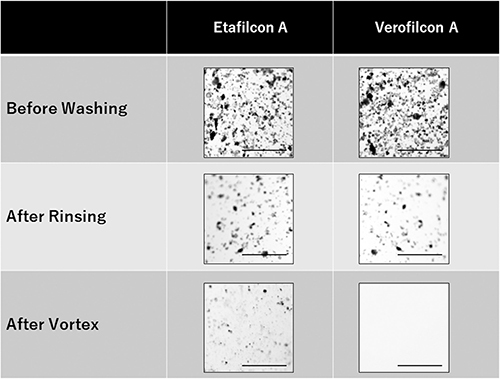Figures & data
Table 1 Characteristics of the Contact Lenses
Figure 1 Representative photographs of Asian dust particles on the surface of soft contact lenses (SCLs) before washing, after rinsing, and after vortexing with physiological saline. Bars = 100 µm.



